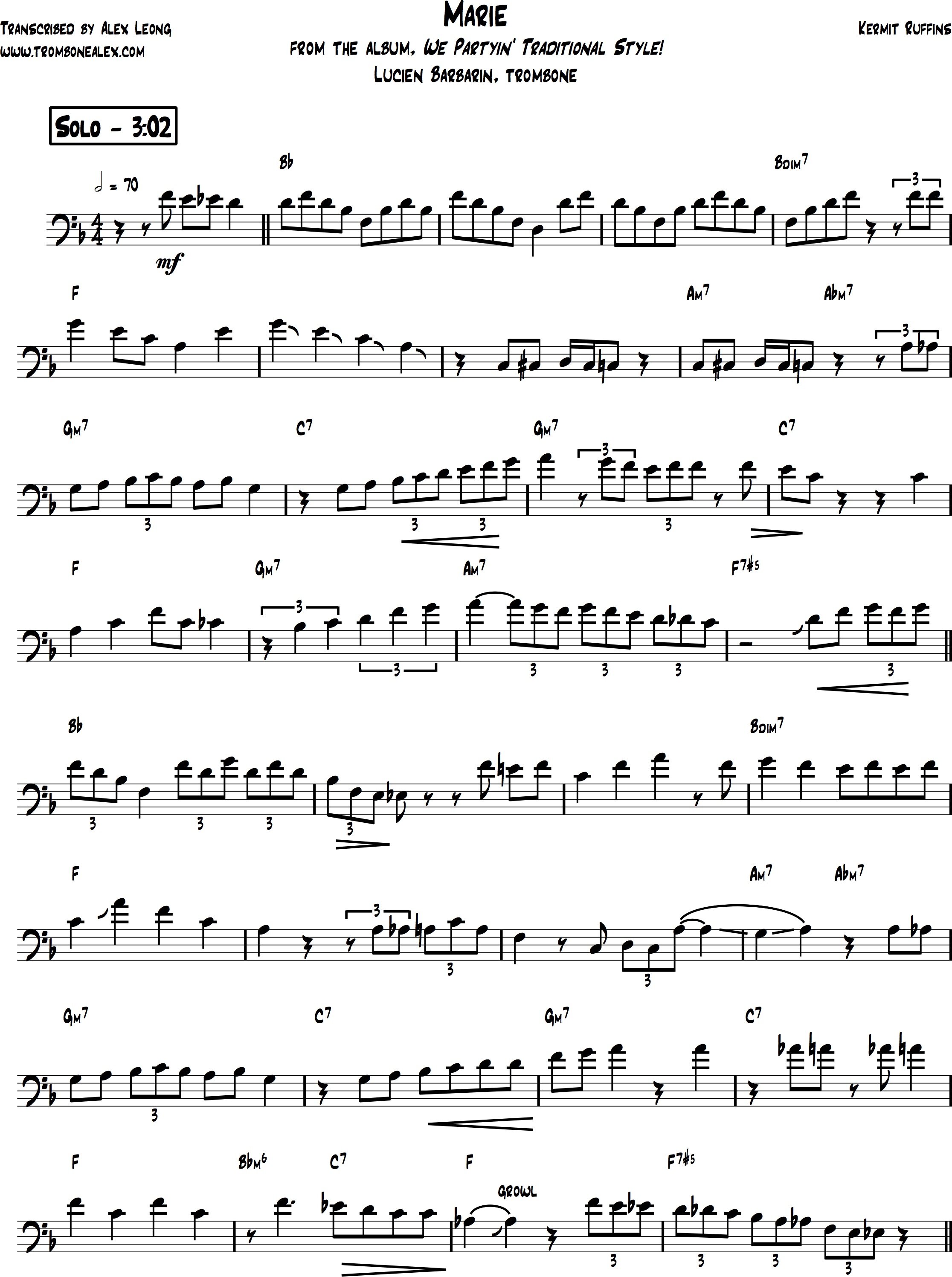"Marie" - Lucien Barbarin
“Marie” (PDF) from the Kermit Ruffins album, We Partyin’ Traditional Style!
In 1937, trombonist and bandleader Tommy Dorsey recorded a new arrangement of Irving Berlin’s somewhat-popular 1928 waltz, “Marie (The Dawn Is Breaking);” its most notable difference being a 4/4 swing rhythm. Researcher Mike Zirpolo documents the evolution of this arrangement, focusing mainly on the trumpet soloing of Bunny Berigan and the influence of Louis Armstrong during the era, but Zirpolo also reveals that the arrangement was originally acquired in 1936 from Doc Wheeler & His Sunset Royal Serenaders, a Black trombonist and bandleader who shared concert billing with Dorsey’s band.
In 1940, the first Black vocal group to host a national radio show, The Mills Brothers, recorded a version of Berlin’s “Marie” featuring Louis Armstrong on trumpet and lead vocal, perhaps as an act of retribution for Doc Wheeler’s contributions. While the recording wasn’t as successful as Dorsey’s, for whatever reason, it can be assumed that Armstrong’s performance is what inspired Kermit Ruffins to carry on the song’s tradition as an audience pleaser.
On Kermit’s recording, trombonist Lucien Barbarin patiently demonstrates how to inject lively phrasing into the gradual chord changes. Through the use of arpeggiated patterns and chromatic passing tones that mimic the tailgate style, Barbarin keeps the rhythmic lilt in the foreground of his solo; perhaps the single element of performance that inspired Dorsey to monetize.
Here is a YouTube video of Kermit performing at the Mother-In-Law Lounge with a fantastic trombone solo from Haruka Kikuchi:
Recommended reading: Traditional New Orleans Jazz: Conversations with the Men Who Make the Music by Thomas W. Jacobsen. Published by Louisiana State University Press.
